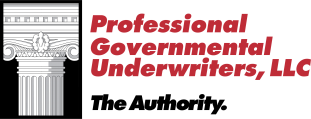The Rise of “Active Shooter” Insurance
In the United States, the gun rights debate is one that will never seem to let up. One way the debate is highlighted in the violent acts that befall communities and schools, fueling the narrative behind the need for stricter gun laws. In 2018 alone there have been more than 325 mass shootings in the United States. This has prompted schools and local governments to look for ways to keep their friends, family, children and employees safe.
This has also fueled the need for what’s known as “active shooter” insurance. For example, after the February shooting at Stoneman Douglas High School in South Florida, where 17 people were killed and more than a dozen were injured, multiple school districts in the region bought up $3 million-worth of this kind of coverage.
What is “Active Shooter” Insurance?
Active shooter insurance covers expenses related to shootings in places like office parks and local entertainment venues. Schools are starting to invest in this kind of insurance as well, especially with the rising attention focused on mass shootings. The insurance pays up to $250,000 per shooting victim, including death and other injuries like disabilities.
With the jump in the number of shootings and victims in the past few years, more and more schools are looking into “active shooter” and “active assailant” policies. This is mainly because districts are coming to the understanding that their general liability policies do not cover what is needed following this kind of tragedy. Shootings are different in that the amount of bills and amount of money included in those bills skyrocket compared to other general risks.
Costs don’t just include medical bills, but can also include lawsuits from the victims and their families. Legal fees mount and trauma counseling also act as factors. And, as we all saw following the Parkland shootings in February, the community gets involved with charity, taking on a great amount of donations, which in turn brings in media consultant and accountants.
A History of Violence
The conversation around “active shooter” insurance didn’t just begin in early 2018. In fact, it was a hot button talking point back in 2012 after the Sandy Hook Elementary tragedy in which a gunman killed 26 people, most of them children. A wrongful death lawsuit was filed by families of two children killed, causing a long and drawn out legal battle for the school district.
The process of handling a lawsuit, on either side, can take years to complete, like with Sandy Hook. School employees are generally covered through workers’ compensation insurance and some policies help families when it comes to medical costs.
Driving Up the Cost
“Active shooter” insurance is still an evolving piece of coverage. It’s been around for nearly a decade, but has only picked up steam in the last couple of years, especially with more frequent and dire shooting statistics. Premiums can range from $1,5000 per year for $1 million coverage to $50,000 for a $5 million policy for larger school districts.
Even though the coverage is still relatively new, sales are rising. And coverage is even evolving to include construction costs following a shooting, so school districts have the funds and resources to reconstruct areas of buildings physically affected by a shooting.
Deadly Weapon Protection
At PGUI, we have recently rebranded our former Active Shooter Protection program as Deadly Weapon Protection. This coverage provides educational institutions with third-party liability coverage and crisis management services, with a broad definition of a “weapon”.
About Professional Governmental Underwriters, Inc.
Professional Governmental Underwriters, Inc., is a full-service risk management company dedicated to assisting public, educational and non-profit entities in the management of their professional liability exposures. We are dedicated to providing state-of-the-art professional underwriting management and loss control advisory services on behalf of our designated carriers. For more information, call us toll-free at (800) 586-6502.




